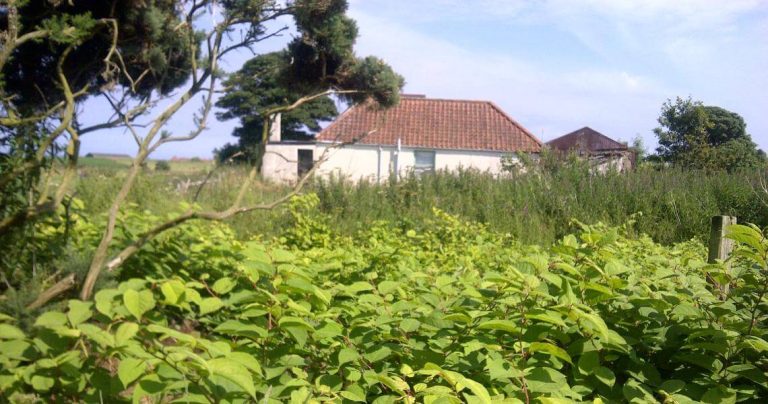
Blog
Why is it growing there…?
Author: Mike Clough
Date Posted: Thursday 23rd April 2015

0161 723 2000
8AM to 5PM

Author: Mike Clough
Date Posted: Thursday 23rd April 2015

In its native Japan, Fallopia japonica is a component of communities inhabiting extreme lava and ash sheets at high altitudes. In these situations F. japonica is a pioneer species facilitating the growth of other plant species. The plant also spreads into man-made habitats, pastures and roadsides where it is one of the most troublesome weeds in Japan.
Fallopia sachalinensis occurs in natural vegetation of coastal cliffs and mountain riversides both of which are subject to natural disturbance- and on road verges and other places where man has disturbed the ground. There are also pure stands of F sachalinensis as pioneer vegetation on bare soils in human settlements.
In Europe Fallopia plants grow strongly in man-made habitats – however the hybrid Fallopia x bohemica shows the highest proportion of growth outside of human settlements. Growth along roads and watercourses are the most frequent habitats for all of the plant group.
A comparison of all three taxa in the Czech republic showed that whilst F x bohemica was the most common along watercourses, F japonica was the most often found along roads. Compared to the other taxa F. sachalinensis was more confined to gardens and parks where it had been planted as an ornamental.
F. japonica invaded more habitat types than either F sachalinensis or F x bohemica – whilst F x bohemica out competes both parental taxa at sites where both taxa co exist.
Fallopia species create dense monoculture stands which almost entirely preclude the growth of native species. The stands expand through growth of an extensive rhizome system beneath the ground. Above ground the plants has rapid stem growth of up to 15cm a day with the dense stands and large leaves forming a compact canopy allowing little light to each the ground from early Spring until the end of the season.
The plants contain high concentrations of phenolic compounds (eg trans-resveratrol) particularly in the rhizomes which can thus influence the presence of native species by allelopathy* (*the secretion of a chemical which are harmful on other plants).
There is a decrease in native species in previously species rich communities due to the high competitive ability of Fallopia taxa with very few other species being able to survive – mainly spring geophytes or nitrophilous ruderals such as Urtica dioica, Geranium robertianum or Aegopdium podagraria.
Field experiments have shown that no single mechanism is responsible for this depletion of native plants. Whilst shading appears to be a dramatic influence on juvenile plants – many seedlings are simply unable to establish in the dense Fallopia stands.
Mike C
Ref : Biological Invasions (2009)